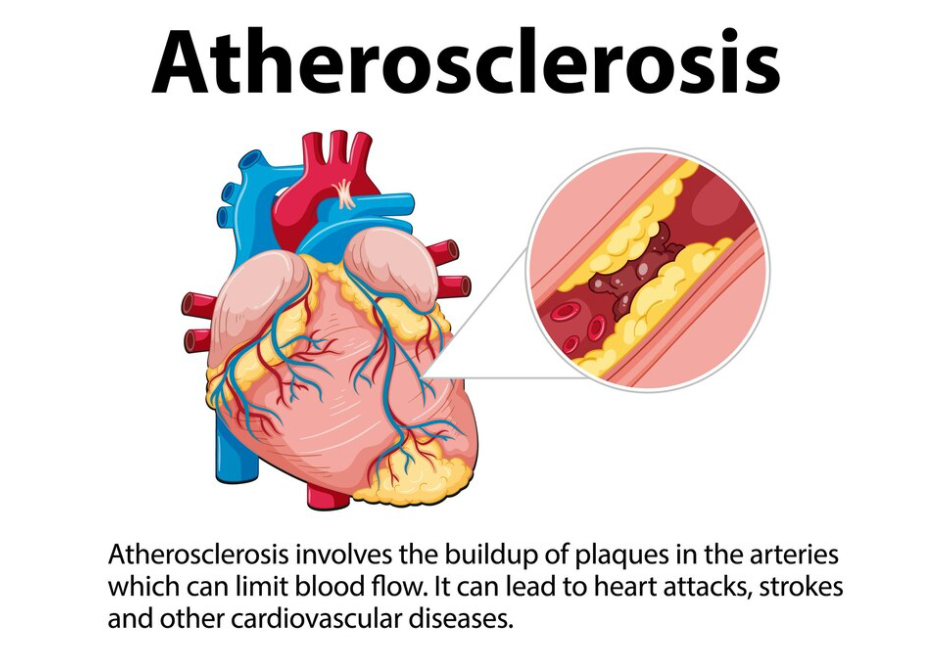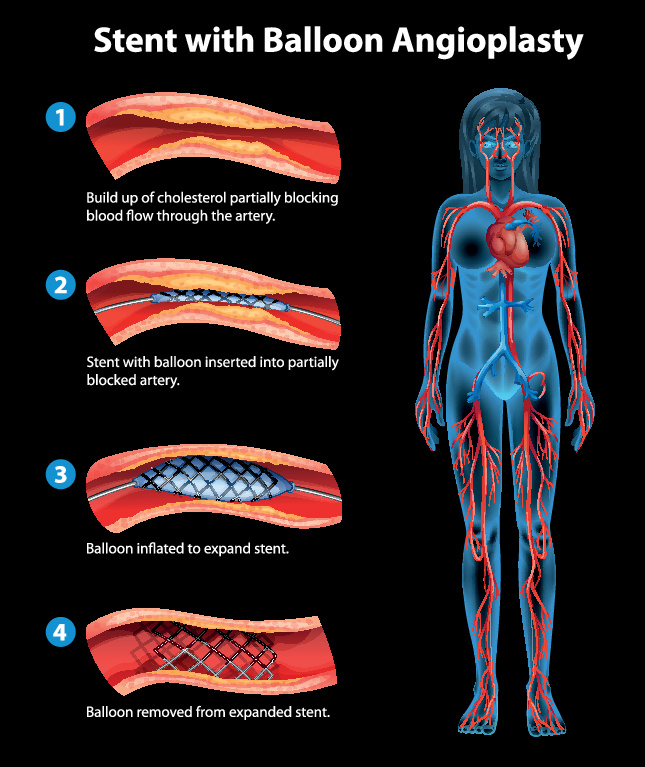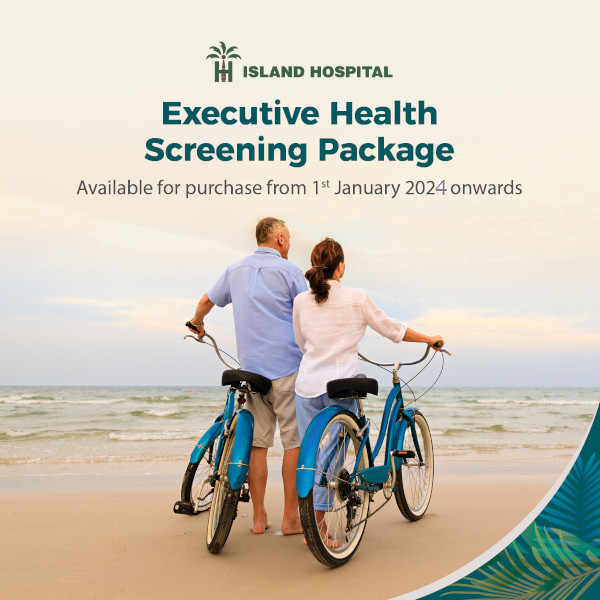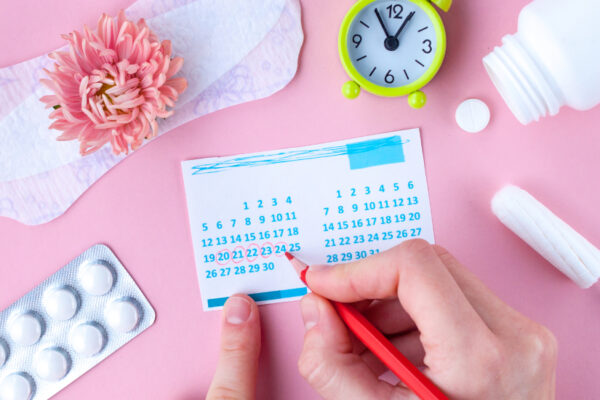
06 Sep Heart Stent Procedure: Your Path to a Healthier Heart
Heart Stent Procedure: Your Path to a Healthier Heart
By Island Hospital | September 6, 2024 12:00:00 PM
Medical Reviewer: Dr. Chiew Kean Shyong, Cardiologist
Heart stents are inserted during an angioplasty procedure to either address a heart attack as an emergency measure or to widen a narrowed or blocked blood vessel as a planned treatment.
The procedure is generally safe, boasting an impressive 95% success rate, a low complication rate, and excellent outcomes at 12 months.
In this article, we’ll explore when a heart stent procedure is necessary, the associated risks and benefits, the steps of the procedure, aftercare, and tips for maintaining a healthy heart.
What is a Heart Stent Procedure?
A heart stent procedure, also known as a coronary angioplasty, is the process of inserting a stent to open narrowed or blocked blood vessels (coronary arteries) in the heart. This stent is a tiny, metal mesh tube that expands inside and keeps the coronary artery open.
This stent can be inserted permanently to resolve a blocked artery in areas such as the heart, legs, or neck. This treatment is minimally invasive, as it does not require open-heart surgery to restore blood flow to the heart.
Worried about your heart health? Read our article on how to prevent heart disease to discover vital steps for reducing risk factors and strengthening your heart.
When is a Heart Stent Procedure Necessary?

Photo by Freepik
The buildup of plaque, which is made up of fat and cholesterol, inside the artery walls can narrow or block the artery. This condition is known as atherosclerosis.
Your doctor may recommend this treatment in the following situations:
- Emergency treatment for a heart attack (to fix blood flow quickly).
- Medicines or lifestyle changes are ineffective in improving heart health.
- Blocked or narrowed coronary artery that may lead to heart failure.
- Chest pain (angina) caused by narrowed or blocked arteries is getting worse.
Do note that a heart stent procedure is not suitable for all situations. Consult your cardiologist and healthcare team to determine the best treatment option for your condition.
Risks of a Heart Stent Procedure
Angioplasty and stent placement is a generally safe procedure. However, there are some possible risks which include:
- Re-narrowing of the artery
- Blood clots
- Bleeding
- Infection
Rare risks of angioplasty include:
- Allergic reaction to the drug in a drug-eluting stent, the stent material, or the contrast agent used in the procedure
- Coronary artery damage
- Kidney injury or failure
- Heart attack
- Stroke
- Irregular heartbeats
The level of risk depends on age, health status, and circumstances of the treatment (e.g., emergency or planned). Specifically, the following factors increase your risk:
- Being female
- Age 75 years or older
- Kidney disease
- Diabetes
- Poor heart pumping function
- Critical heart disease and blockage
Your doctor will assess if this treatment is suitable for you. If you have any concerns, discuss with your healthcare provider before the procedure.
Heart Stent Procedure
Here is what to expect before, during, and after this procedure.
What to Prepare
In cases where this procedure is an emergency treatment for a heart attack, you will not have time to prepare. However, during nonemergency procedures, here are a few preparation steps you can take:
- Provide your doctor with a list of all your medications, dietary supplements, and herbal treatments.
- Consult your doctor on which medicines need to be continued or temporarily stopped before the procedure. Examples include aspirin, nonsteroidal anti-inflammatory drugs (NSAIDs) or blood thinners.
- Inform your doctor of the following conditions: allergy to seafood, past bad reaction to contrast agent or iodine, Viagra use, and pregnancy or possibility of pregnancy.
- Do not eat or drink anything for 6 to 8 hours before the procedure.
- Take the approved medications by your doctor with a small sip of water on the morning of the procedure.
- Arrange for someone to take you home after the procedure.
During

Photo by Freepik
This procedure is usually done in a specialised room known as a catheter lab. It generally takes between 30 minutes and 2 hours to complete, depending on the complexity and the number of arteries treated. Here are the general steps of a heart stent procedure:
1. Preparation
Before the procedure begins, you’ll be given a local anaesthetic to numb the area where the catheter will be inserted, usually the groyne or wrist. You may also be given a sedative to help you relax. A sterile drape will be placed over you to maintain a clean environment.
2. Catheter Insertion
A thin, flexible tube called a catheter is inserted into a blood vessel through a small incision. Using fluoroscopy, a type of real-time X-ray, the doctor guides the catheter to the heart. Contrast dye is injected through the catheter to show any blockages in the arteries. Based on the results, the doctor decides whether to proceed with the angioplasty.
3. Balloon Inflation and Stent Placement
Once the catheter reaches the blocked artery, a small balloon at the tip is inflated to compress the plaque against the artery walls, widening the vessel. A stent, a small mesh tube, is then inserted to keep the artery open. The balloon is deflated and removed, leaving the stent in place to support the artery.
4. Catheter Removal and Closure
After the stent is in place, the catheter is carefully withdrawn. The insertion site is then closed by either using a special device to seal the blood vessel, using stitches, or applying manual pressure on the area. If there are multiple blockages, this process may be repeated. You’ll be monitored for a short time to ensure there are no immediate complications.
Do note that you may feel momentary, mild discomfort during this process. Tell your doctor if you experience breathing difficulties, persistent discomfort or pain, sweating, numbness, itching, nausea, chills, or heart palpitations.
Recovery & Aftercare
Here is what to expect after the procedure:
- Pain at the area (groyne, arm, or wrist) where the catheter was inserted.
- Bruising around and below the insertion site.
- Relief from certain symptoms experienced before the treatment, such as chest pain and shortness of breath.
To ensure a smooth and speedy recovery, your doctor may recommend the following:
1. Take Blood-Thinning Medicines
Following the procedure, you will likely be prescribed blood-thinning medications such as aspirin to prevent blood clots from forming around the stent. It’s crucial to take these medications exactly as prescribed and attend follow-up appointments to monitor their effectiveness.
2. Care For The Insertion Site
Take appropriate measures to care for your insertion site as advised by your doctor. Keep the site clean and dry at all times, and watch out for signs of complications (e.g., bleeding, swelling, discolouration). Do note that there will be a small lump at the site, which will gradually disappear over the span of a few weeks.
3. Avoid Strenuous Activities
To aid in recovery, you may need to avoid strenuous activities and heavy lifting for 24 hours after the procedure OR as advised by your doctor. Additionally, you may need to limit climbing stairs. It’s important to follow these restrictions to ensure proper healing and reduce the risk of bleeding at the catheter insertion site.
4. Undergo Cardiac Rehabilitation
Cardiac rehabilitation is often recommended to help you recover fully and improve your heart health. This program typically includes supervised exercise, education about lifestyle changes (e.g., dietary guidelines), and counselling. Overall, engaging in cardiac rehab can help you adopt long-term heart-healthy habits.
When to See a Doctor
After the procedure, patients and their caregivers must keep an eye out for signs of complications. Call your doctor immediately if you experience any of the following symptoms:
- Persistent chest pain or shortness of breath.
- Weakness, dizziness, or fainting.
- Bleeding or swelling at the area where the catheter was inserted.
- Severe pain or discomfort at the area the catheter was inserted.
- Signs of infection (e.g., redness, swelling, drainage, fever).
- Change in temperature, colour, or sensation (numbness) of the leg or arm below the area where the catheter was inserted.
- Irregular heartbeat that is very slow (less than 60 beats) or very fast (more than 100 to 120 beats) a minute.
Tips For a Healthy Heart
Here are a few tips to assist your recovery from the heart stent procedure and maintain overall heart health.
Foods to Take or Avoid
Here are foods to include in your diet:
- Whole grains
- Healthy fats and oils (olive oil, avocados, nuts)
- Fruits and vegetables
- Lean proteins (fish, poultry, legumes)
- Low-fat dairy products
Here are foods to limit in your diet:
- Alcohol
- Fatty meats and oily foods
- High-fat dairy products
- High-sodium foods
- Processed and refined foods
- Excessive sugar (sweets, sugary drinks)
If you’re searching for heart-healthy diets, we recommend trying scientifically-backed diets such as the DASH Diet (Dietary Approaches to Stop Hypertension) and the Mediterranean Diet.
The DASH Diet aims to lower blood pressure, while the Mediterranean Diet aims to improve overall health with Mediterranean food. Both diets share similarities in their emphasis on vegetables, fruits, and whole grains. However, they differ in some specific recommendations.
For example, the Mediterranean Diet places a stronger emphasis on seafood and healthy fats like olive oil, while the DASH Diet focuses more on reducing sodium intake. Before adopting either diet, consult your doctor to determine which best suits your health needs and goals.
Learn more about what foods to eat and avoid in our article on simple tips for a heart healthy diet.
Exercise For Heart Stent Patients
After your procedure, it’s crucial to balance rest and exercise to promote healing and maintain heart health. In the first week after surgery, prioritise rest and limit physical activity when possible. This allows your wound to heal and your coronary artery to recover.
After the first few days, experts recommend doing light housework and going on short walks. Gradually increase this in the second week, by taking on more activities and walking longer distances.
In the weeks following the procedure, you may incorporate low-impact exercises such as:
- Walking
- Swimming or water aerobics
- Light cycling
- Gentle yoga or stretching
Be careful not to push yourself too hard. Follow this simple tip when exercising: walk / swim / cycle at a comfortable pace where you can still talk, but feel warm and slightly short of breath.
Keep in mind that regular exercise is essential for long-term heart health. Consult your doctor before starting any exercise programme and discuss with your medical team which activities are suitable for you.
Healthy Habits
On top of maintaining a heart healthy diet and exercising, make the following lifestyle changes:
- Drink plenty of water.
- Do not smoke or use tobacco products.
- Limit alcohol consumption.
- Maintain a healthy weight.
- Monitor and control cholesterol, blood pressure, and blood sugar levels.
- Manage stress through relaxation techniques.
- Get enough sleep (around 7-9 hours per night).
- Take prescribed medications.
- Attend all follow-up appointments and cardiac rehabilitation sessions.
Remember to always follow your doctor’s specific recommendations, as they may vary based on your individual condition and recovery progress.
Explore Comprehensive Heart Treatments at Island Hospital
In conclusion, heart stent procedures offer a vital solution for managing blocked or narrowed arteries, either as an emergency intervention during a heart attack or as a planned treatment to improve blood flow. With a high success rate and minimal complications, stents play a crucial role in enhancing heart health.
At Island Hospital, we understand the importance of comprehensive heart care. Our Cardiology Department and Heart Centre are equipped with advanced technology and staffed by a dedicated team of professional cardiologists, nurses, and support staff.
Our commitment to excellence has earned us local and worldwide recognition:
- A finalist for Malaysia’s Flagship Medical Tourism Hospital Programme
- A place on Newsweek’s lists of World’s Best Hospitals 2024
- A place Best Specialized Hospitals Asia Pacific 2024 (Cardiology).
Hence, whether you are seeking preventive care, diagnostic services, or advanced treatments for heart-related conditions, Island Hospital is your trusted partner in achieving optimal cardiovascular health.
Take Charge of Your Health Today!

Introducing our Executive Health Screening Package for just RM760.
This comprehensive health check includes a physical examination, complete medical report, consultation with a health screening physician or specialist, light refreshments, and an exclusive Island Hospital woven bag.
Prevention is always better than cure, so take charge of your well-being by booking our Executive Health Screening Package today!
FAQ
Is putting a stent in the heart painful?
This procedure is generally performed under local anaesthesia. This means you may feel some discomfort or pressure, but it shouldn’t be intensely painful. Some patients experience mild discomfort during or after the procedure, but this is typically managed with medication and should improve quickly.
How many years does a heart stent last?
Stents are permanent. However, there is a 2 to 3 percent risk of the blood vessel narrowing again, which may happen depending on individual health conditions and adherence to lifestyle changes and medication. This narrowing can be treated with another stent.
How many stents can a person have?
There is no strict limit on the number of stents a person can have. The number depends on the severity and location of arterial blockages. Some people may need multiple stents in different arteries, but the decision is made based on individual medical needs and the condition of the arteries. Do note that the more stents, the greater the risk of complications.
How much blockage requires a stent?
Generally, a stent is considered when the artery is around 70% blocked or more. The decision to place a stent also depends on symptoms and overall heart function. Your doctor will assess your situation to determine if a stent is appropriate.
When should I call a doctor?
Contact your doctor immediately if you experience severe or persistent chest pain, shortness of breath, dizziness, fatigue, or irregular heartbeat after a stent procedure. Additionally, call your healthcare provider if you notice any signs of infection, bleeding, numbness, discolouration, or swelling at the insertion site.
Learn more about signs of complications in this section.
What are the alternatives to a heart stent procedure?
A coronary artery bypass graft (CABG) may be considered in situations where multiple coronary arteries are blocked or the arteries are abnormally shaped. However, this treatment is more invasive, requires a longer recovery time, and therefore not recommended for individuals who are vulnerable / in poor health.
Consult your doctor to determine which treatment best suits your condition.






